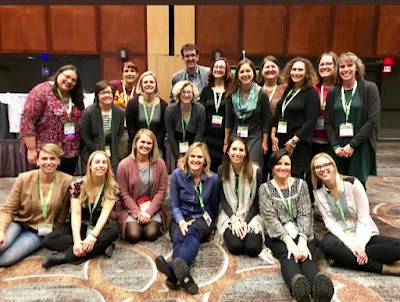What Barefoot Running Can Teach Us About Independent Reading
May is almost half over! How did that happen? One minute it was May first, and now it's the 14th - my seniors are done; my underclassmen are scurrying frantically to finish up their last books and responses.
And me?
I, uh, well. I've been reading running books. This feels like a guilty confession. Like, I should be reading a good professional book, an award-winning adult novel, or more YA lit (I did finish Jennifer Niven's All The Bright Places and loved, loved, loved it). But I am not. Instead I am immersed in the world of running books. Not how-to books. I'm reading some life-changing stuff - narratives about lives transformed by running and tales of human accomplishment I never even dreamed were possible.
First, I read Tom Foreman's My Year of Running Dangerously: A Dad, a Daughter, and a Ridiculous Plan with my ears. It was a lovely, funny story of a dad and his daughter training for a marathon, and then it became the story of a dad, in his 50s, going on to do 50=mile UltraMarathons. Holy cow. Fifty mile races.
Then I moved on Born to Run: A Hidden Tribe, Superathletes, and the Greatest Race the World Has Never Seen by Christopher McDougall. WOW! Running inspiration galore and more crazy stories about what humans are capable of. 100 mile races in crazy conditions. Holy moly!
I have to keep this going. Here's my current stack, thanks to a few library visits this week. I might be slightly addicted.
Barefoot Ted (Ted McDonald) wanted to do a triathlon but was struggling with back pain when he would try to run. He tried more expensive, cushioned running shoes, even the ultra-springy Kangoo Jumps, but nothing worked (check these "shoes" out at kangoojumps.com). His back hurt more. In frustration, he took off his Kangoo Jumps and walked home. His back did not hurt. So it began, first training barefoot and then running barefoot.
Apparently running shoes, in their attempt to offer lots of arch support and heel cushioning, weaken our feet and throw off our posture, which can cause problems for the back, knees and hips. The shoe is like a protective cocoon that makes our feet feel great, but doesn't allow our feet to work and stay strong. They alter the body's natural running ability.
So how does this relate to independent reading? In my classroom this year, we have read exclusively independent books, no whole class novels at all. So many of my students have embraced choice reading - they've found books they love and now value the 30 minutes of reading we're currently doing during our 85 minute block. I have a couple of students, however, who are still quite vocal about how they shouldn't be in my class - they feel it's too easy; they don't need extra help with reading; they're just fine (despite what numerous assessments, their grades, and their work shows). I have struggled to get these kids to read or even to figure them out. Was is just stubborn refusal to see themselves clearly? Was I doing something wrong? Were there really NO books these kids liked? What was the problem?
Today out running a lightbulb came on. These kids have been wearing cushioned running shoes, and they do not want to take them off. The cushion is the support that comes when classes all read the same book. Kids who struggle can get help in a lot of ways that have nothing to do with becoming a stronger reader. They can listen to teachers and classmates in class discussions. They can read just enough to know the basics. They can look up themes and symbolism and motifs online. In short, they can pass and look capable without being a reader at all.
But in a class with only independent reading, where each student must choose books that are just-right, where each student must actually read the book and respond to it authentically in conversations with me, with classmates and in writing, there is no cushioning. There is no place to fake it. Each reader has to read, process information, understand and reflect. They have to get stronger as readers; there's no other way through. They must face that initial discomfort, keep at it, and gradually they will reap the long-term benefits.
I've read a bit more about barefoot running because I am runner who has not run much in the last year and a half because of back and hip pain. It's not as easy as just kicking of your cushiony kicks and going for it. Most people's feet and legs don't have the strength to just go for it - it will take some training to strengthen muscles and adjust form before most people's bodies will love this. In the short term, it will be a struggle. But long term, they will become stronger, more natural runners.
Just like reading.
I think back to August with most of my class. Oh my. The struggle was real. But the kids who've come with me on this year-long journey really are transformed. They are so much stronger. They can find books they like; they are deeply engaged; they have so much more stamina, and they have authentic responses and deeper thinking about books. This is clear to me as I listen to their talk about books and read their writing.
Independent reading really does work. I know my students are stronger and more autonomous now than they were when we started. It was a risk to remove the cushioning, but the payoff was huge.
As for barefoot running? I'm not sure if I'll ever go full-out barefoot, but after one day of running in some really light, flat running shoes, my back feels great. Who knows what will happen as my feet and legs get stronger...and I've read all those books?!






Comments
Post a Comment